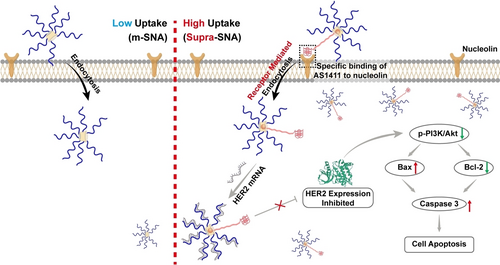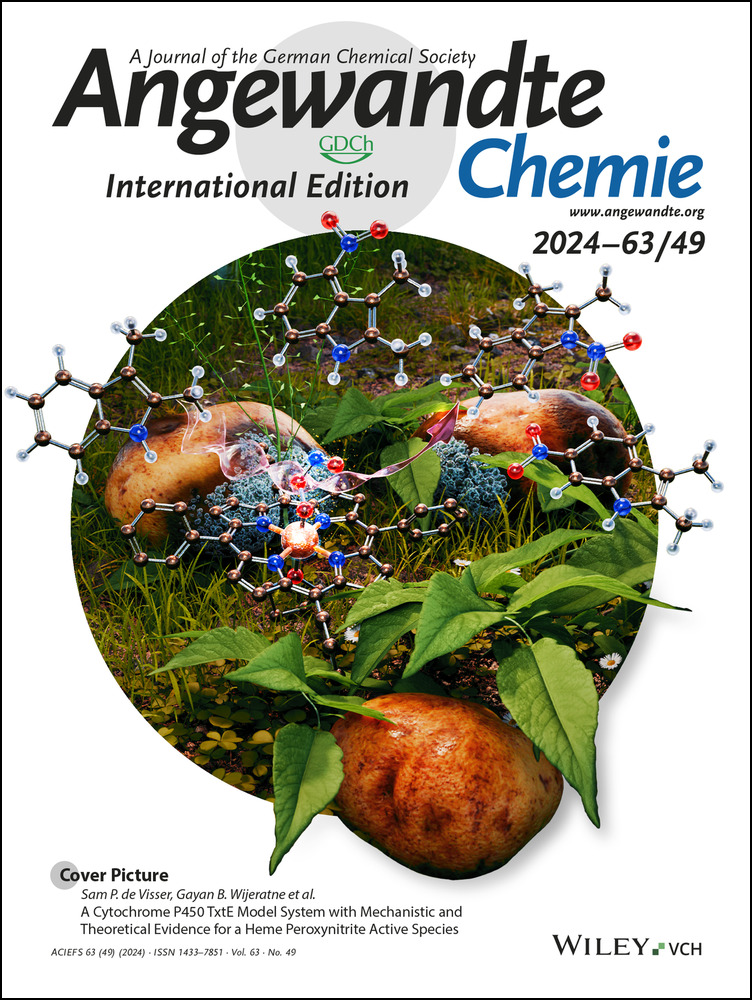Precise Preparation of Supramolecular Spherical Nucleic Acids for Nucleolin-Targeted Gene Delivery
Graphical Abstract
Precise supramolecular nucleic acids (Supra-SNAs) were designed by incorporating a pair of β-cyclodextrin modified with multiple nucleic acids and adamantane with functional targeting nucleic acid. These Supra-SNAs with multivalent structure exhibit enhanced nuclease resistance, cellular uptake, and gene regulation capabilities in comparison to single-stranded DNA molecule. Moreover, the inhibition of gene expression in tumor cells leads to down-regulate PI3K/AKT signaling pathway and thus effective cell proliferation and death against tumor cells.
Abstract
Molecular spherical nucleic acids (m-SNAs) are a second generation of spherical nucleic acids (SNAs), which are of significance in potential application of targeted delivery of nucleic acids or gene regulation due to their defined molecular structures. Nevertheless, m-SNAs typically involve a single DNA sequence which greatly limits its functions as either targeting purpose or gene regulation. In response, we proposed here a third generation, supramolecular spherical nucleic acids (Supra-SNAs) with two different sequences to achieve both above-mentioned functions. Specifically, we constructed a series of supramolecular self-assembly structures by coupling a cell membrane receptor (i.e., nucleolin)-recognizing aptamer (AS1411)-modified adamantine as targeting probe and human epithelial growth factor receptor 2 (HER2) antisense-functionalized β-cyclodextrin to specifically inhibit the overexpression of HER2 proteins for gene regulations. In comparison to the m-SNA precursors, such Supra-SNA structures exhibited enhanced levels of resistance to nuclease degradation, cellular uptake, gene regulation capabilities and tumor retention capacity. We demonstrated that Supra-SNAs exhibited optimal cell suppression rates and cell apoptosis via a phosphatidylinositol 3-kinase/protein kinase B signaling pathway. The well-defined molecular structures provide an attractive platform for investigating interrelationship between structure and property at the molecular level.
Conflict of Interests
The authors declare no conflict of interest.
Open Research
Data Availability Statement
The data that support the findings of this study are available from the corresponding author upon reasonable request.





